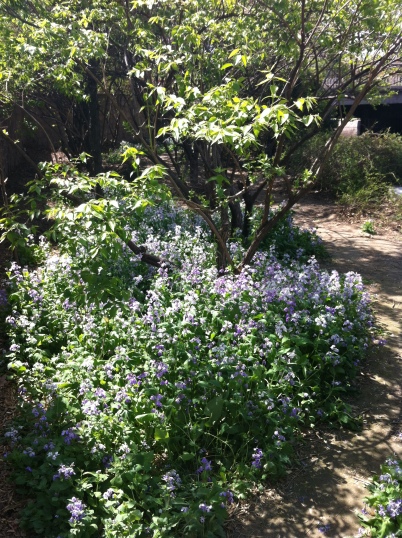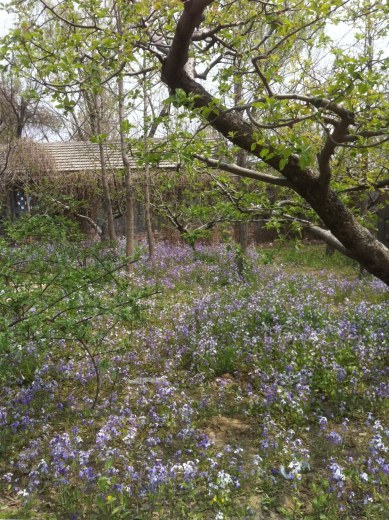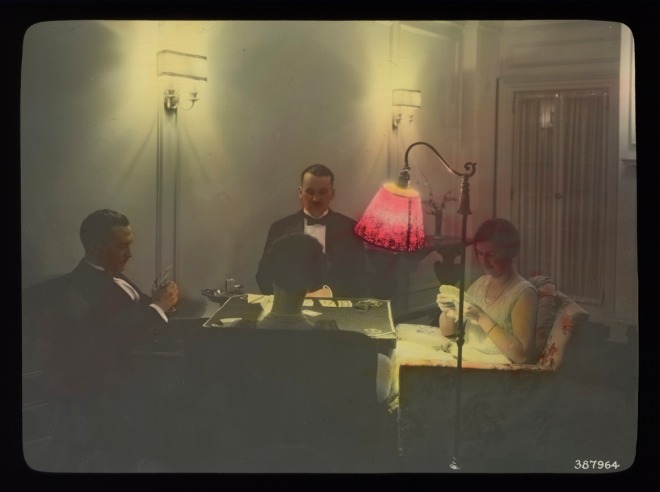Beijing, 5 April 2013
My previous post about chocolate Easter eggs led me to take a page from Charles Dickens and I allowed myself to be visited by the ghost of Easters past. He took me back through memories of previous Easters, some very pleasant and others not so much. One in particular has stayed with me, the Easter I passed on a cruise in the Mediterranean when I was 14.
My English grandmother had decided that she would like to go on a cruise but wanted company. So she took me and my older brother along with her. It was a wonderful trip, one of those golden-hued memories that each one of us has. Easter itself was celebrated without much fuss and bother in Brindisi, in southern Italy – we were just a few Catholics among a sea of Anglicans and so were packed off to a small room on the ship and a local priest was brought in for the occasion. A surf through the web tells me that Easter occurred on April 14, two weeks later than this year. We were already towards the end of the cruise. There were a couple more stops in what was then Yugoslavia and is now Croatia, at Split and Dubrovnik, and then it was back to Venice where we had boarded ship. Before Brindisi, we had visited Olympia, Crete, Athens, Istanbul, Ephesus, and then finally Rhodes before starting back (there was also a visit to one of the smaller Ionian islands but I no longer remember which one).
For me, this was a trip of many firsts (well, the whole trip was a first but there were certain things which were more first than others, if you get my drift).
It was my first trip to Venice, one which my wife and I have repeated many, many times, sometimes with the children, first from Milan when we lived there and then later from Vienna. What I fell in love with that first time and keep going back to is not the grand theatricality of St. Mark’s Square

or of the laguna, which the cruise ship sailed down as we left Venice
No, what always bring us back is the humbler Venice, the alleys and lanes (it’s hard to talk of streets when there are no cars) far away from the tourist haunts, which widen and narrow with no apparent rhyme or reason, which loop and re-loop over narrow canals, which suddenly bring you, blinking in the light, into small piazzas teeming with life.




We spent the afternoon before setting sail wandering around, map in hand – a map is always necessary in Venice, although my wife is not really of that opinion: ask people the way, that’s her motto.
The cruise also took me on my first visit to classical ruins. England and the parts of France I was then familiar with don’t have any Roman ruins to speak of; an odd crumbling wall here and there is about the sum of it. Here, we had a feast!
Olympia

Knossos

Mycenae

The Acropolis in Athens

Cape Sounion

Ephesus

Actually, it was more a surfeit than a feast. To be very honest, after I’ve seen three broken columns and five fallen walls the experience begins to pall. Many decades later, when I got to know Shelley’s poem Ozymandias I could relate to all these ruins and many others I have seen since all over the world in a different way:
I met a traveller from an antique land
Who said: Two vast and trunkless legs of stone
Stand in the desert. Near them, on the sand,
Half sunk, a shattered visage lies, whose frown,
And wrinkled lip, and sneer of cold command,
Tell that its sculptor well those passions read
Which yet survive, stamped on these lifeless things,
The hand that mocked them and the heart that fed:
And on the pedestal these words appear:
“My name is Ozymandias, king of kings:
Look on my works, ye Mighty, and despair!”
Nothing beside remains. Round the decay
Of that colossal wreck, boundless and bare
The lone and level sands stretch far away
But, in all this blur of broken stone one memory stands out, etched for ever more in my mind: wildflowers growing in profusion among the ruins of Olympia. A search of the web shows that I am not the only traveler to Olympia who has been struck by the flowers there:



The trip was also my first real exposure to Greek sculpture. My grandmother had taken me a few times to the British Museum but somehow we always seemed to end up in the section of the Egyptian mummies – at least, that’s all I remember of those early visits. But the visit to the National Archaeological Museum in Athens was a real eye-opener for me. Two pieces I remember particularly well. One was the statue of Zeus (or is it Poseidon?):

Look at that face!

Speaking of faces, the other piece that impressed itself on me was the gold mask which Schliemann dug up in Mycenae (our Greek and Latin teacher had often quoted the phrase “I have gazed upon the face of Agamemnon”, said to have been uttered by Schliemann when he first set eyes on the mask)

Another notable first on this trip was my exposure to Byzantine mosaics, in the cavernous interior of Hagia Sophia in Istanbul.




This started an interest – an obsessive interest, my wife might observe – in early Christian mosaics, which I have tracked down in various parts of the Mediterranean basin since then.
Istanbul was the site of yet another first, my first exposure to Muslim architecture, in the form of the incomparably beautiful Sultan Ahmed Mosque.

Since then, I have been lucky enough to admire Muslim architecture in all its wonderfully different variations in many parts of the world – even here in Beijing, where it has taken on decidedly Chinese characteristics.

Iran and Central Asia await me still …
On a lighter note, the cruise was the first – and probably last – time I saw the foxtrot being danced. Every evening a three-man band played in the dance room. It started with oldies, and a retired English Major and his wife were assiduous dancers. As the band started up, they would step out, glide through a number of foxtrot numbers, and then retire to the bar.

They looked surprisingly like this picture, just somewhat longer in the tooth.
After they had left, the tempo changed and us young things would take over the dance floor and dance the night away. Well, I didn’t. I was far too shy. I would look on enviously at the elder young things. At last, one took pity on me and led me to the floor to dance my first modern dance. Another first …
Last, but definitely not least, it was on that cruise that I first set eyes on the Mediterranean. It was love at first sight.

______________________
Venice-St Mark’s square: http://www.instablogsimages.com/1/2012/04/25/sunset_on_st_marks_square_image_title_upyro.jpg
Venice-Lagoon: http://cdn2.vtourist.com/4/3990973-looking_back_from_the_water_bus_Venice.jpg
Venice-calle-1: http://renaissancerules.files.wordpress.com/2011/01/venice-2009-294.jpg
Venice-calle-2: http://picasaweb.google.com/lh/photo/Vx_htYT8ClwJ1DwCpMcy1A
Venice-calle-3: http://www.cepolina.com/photo/Europe/Italy/Venice/Venice-mix/3/Venice-street-narrow-calle-rill.jpg
Venice-calle-4: http://farm2.staticflickr.com/1265/5186001188_065ec8a290_z.jpg
Olympia: http://images.fanpop.com/images/image_uploads/Olympia-greece-585497_1024_768.jpg
Knossos-palace: http://ant3145crete.wikispaces.com/file/view/Knossos_1.jpg/68392549/Knossos_1.jpg
Mycenae-lion-gate: http://www.civilization.org.uk/wp-content/uploads/2012/02/Mycenae-Lion-gate-028.jpg
Athens-acropolis: http://www.limotaxi.gr/wp-content/uploads/2010/10/athens1.jpg
Cape Sounion: http://www.grisel.net/images/greece/sounion11.JPG
Ephesus: http://historyoftheancientworld.files.wordpress.com/2012/09/theatre2.jpg
Olympia-wildflowers-1: http://farm3.staticflickr.com/2245/2331955314_1629efb4ab_z.jpg
Olympia-wildflowers-2: http://farm3.staticflickr.com/2380/2331125289_93eb068ca2_z.jpg
Olympia-wildflowers-3: http://www.touringtykes.com/wp-content/uploads/2010/02/olymipia-flowers.jpg
Athens-statue of Zeus/Poseidon-1: http://upload.wikimedia.org/wikipedia/commons/6/67/Bronze_statue_of_Zeus_or_Poseidon.jpg
Athens-statue of Zeus/Poseidon-2: http://cdn.arstechnica.net/wp-content/uploads/2011/11/zeus_or_poseidon_national_archaeological_museum_athens-4ecd0b1-intro.jpg
Athens- Gold Mask “Agamemnon”: http://hernandopages.com/agamemnon.jpg
Istanbul Hagia Sophia-interior: http://hansmast.com/images/istanbul/hagia_sophia/IMG_1846_Enhancer-IMG_1857_Enhancer-2.jpg
Istanbul-Hagia Sophia-mosaics-1: http://www.mosaicartsource.com/Assets/html/artists/lilian/mosaic_hagia_sophia.jpg
Istanbul-Hagia Sophia-mosaics-2: http://www.sacred-destinations.com/turkey/istanbul-hagia-sophia-photos/slides/imperial-entrance-mosaic-c-hbetts.jpg
Istanbul-Hagia Sophia-mosaics-3: http://www.turkey4travel.com/wp-content/uploads/2009/05/hagia-sofia-mosaic.jpg
Istanbul-sultan ahmed mosque: http://www.viitoaremireasa.ro/images/articole/large/2084/Istanbul-Orasul-care-se-intinde-pe-doua-continente-5.jpg
Beijing mosque: http://www.chinadaily.com.cn/cndy/attachement/jpg/site1/20080815/000802ab80450a0f185656.jpg
Foxtrot: http://ssqq.com/archive/images/foxtrot.jpg
Mediterranean Sea-3: http://1.bp.blogspot.com/-4O6DVn4JTeQ/UG6WCS6K7yI/AAAAAAAAFaQ/NHquXzafTsA/s1600/43923144.jpg
















































































